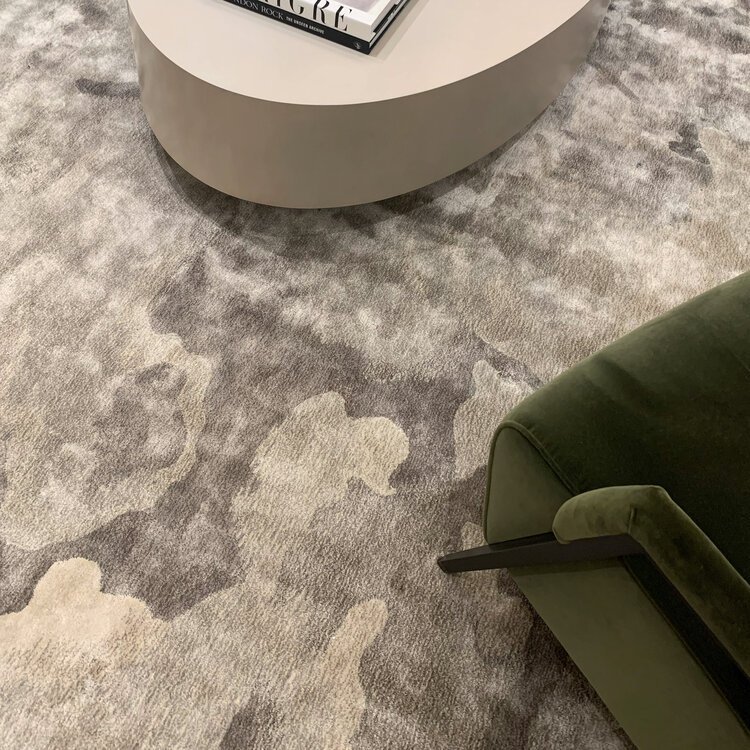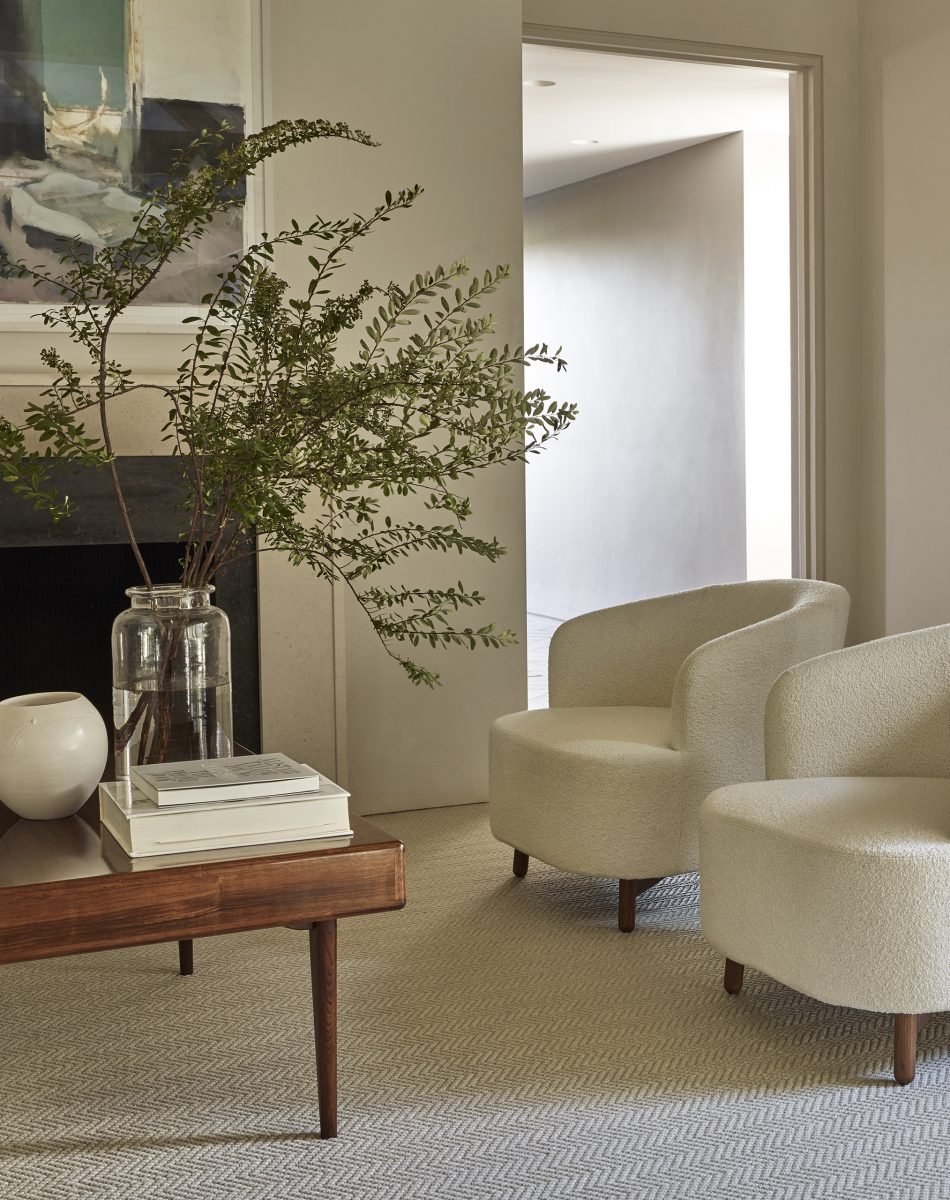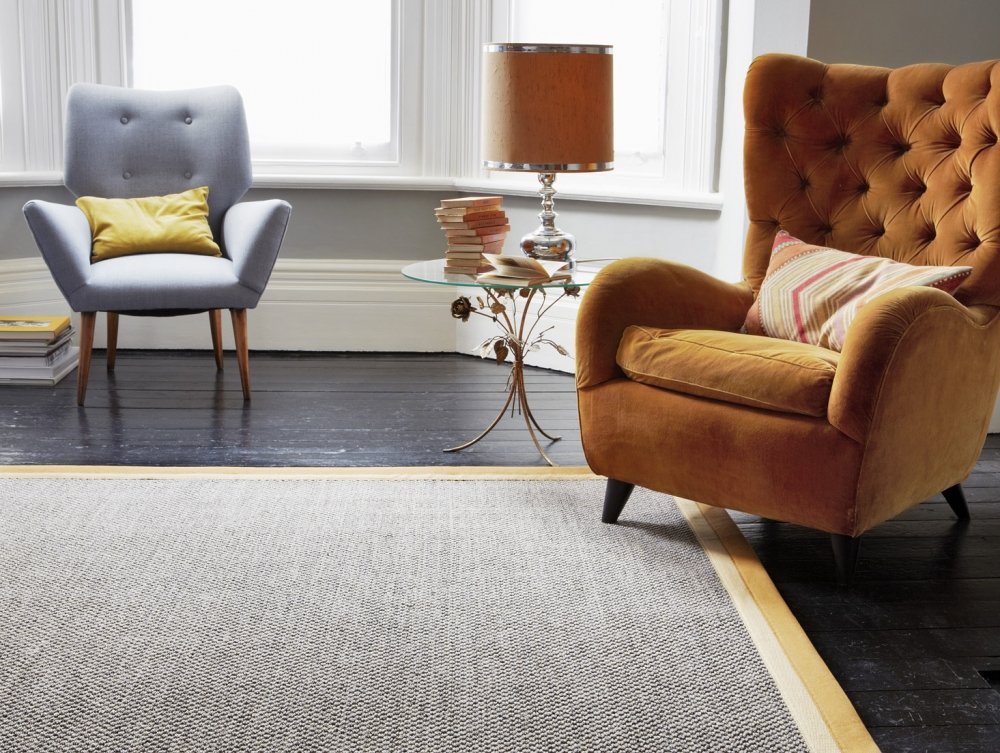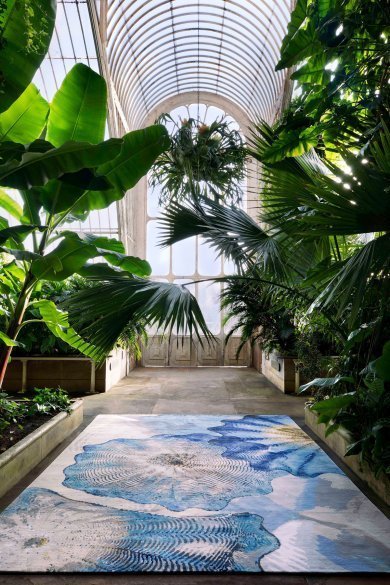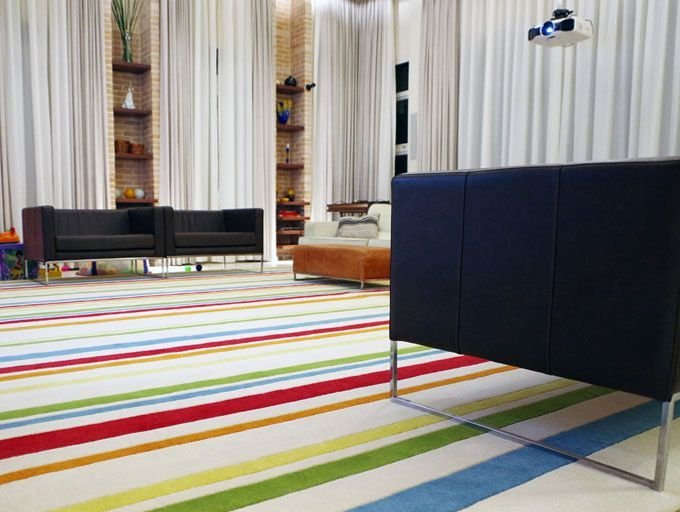Living Room Design, Part 3: The Best Flooring for Living Rooms
What to Consider: How the room is used, whether you want carpet or hard flooring, and how it will look with your furniture and fittings
By London Interior Design Expert, Irene Gunter
Living room flooring is a major part of the look and atmosphere of your home, depending on whether the idea is for the flooring to add a neutral background touch or whether it’s going to be an eye-popping, jaw-dropping addition to the scheme! It can, of course, be both – where there is a beautiful plain wooden plank or parquet, stone or fitted carpet that covers the whole living room floor space, paired with a stunning, intricately woven or patterned rug.
The living room is exactly that – a living room – where we spend lots of time, either relaxing as a family or with guests, or just curling up on the sofa with a good book and a comforting cup of tea. So we are always very conscious that the living room is an integral and comfortable part of the home, blending with the other rooms on the same floor, both visually and materially. That means that we don’t go for harsh contrasts, we want to create a harmonious atmosphere that flows through the whole house. We want the different flooring surfaces to work well together and look amazing, as well as considering all the practicalities such as cleaning and maintenance.
Most of our living rooms will have a hard flooring – usually wood and sometimes large format slab materials in warmer climates, such as marble or terrazzo. Some of our clients, who also have homes overseas, may prefer tiled flooring as it’s something they are used to in their other homes, and for our British climate we usually recommend underfloor heating and some perfectly placed rugs. We can blend materials together by combining two hard surfaces, such as wood and stone, where the living room area may need to segue into a family room or dining room or hallway. We may give the wooden floor a generous stone border, which will link through to the next room, both visually and materially.
For a living room with wood or stone flooring, we generally suggest the inclusion of floor sockets, which are covered sockets inset into the floor, meaning that lamps can be brought nearer the centre of the room. This is where a definitive vision of the finished room is vital – and where as designers, our expertise is required. It’s not just choosing the flooring, the rug, the border, the fixed lighting system and the portable lamps, it’s looking at the concept as a whole and making sure that all the practicalities work, as well as the aesthetics. (PS: floor sockets are also really useful when there’s a Christmas tree, with all its lights, to be positioned in the living room).
Choosing a rug (or room square or area rug as they are sometimes also called) is a fun thing to do, and once again, it needs to be part of the overall living room plan. The size of the rug can depend on the placement of the main items of furniture, such as the sofa, chaise, and chairs. Oh, and the coffee table too, if it’s a particularly large one. Paper templates are a good idea here, to make it easier to judge what items can sit on the rug, and what items can be placed beyond the rug. It’s a similar situation to working out the size of a rug for a dining room, where we need to take into account moving dining chairs in and out, on or off the rug.
As interior designers, we can commission bespoke rugs to fit a specific living room. Sometimes they may be very plain, but luxurious underfoot (the ‘squishy’-factor), perhaps with contrasting bindings. Others may be more decorative, with elaborate patterns and bold colours. If you’re thinking of a patterned rug with motifs such as birds or flowers, think about the direction of the images – will they be best viewed as you walk into the room, or when you are seated? The same goes for strong directional patterns – do you want the zig-zags or the stripes to run widthways through the room or straight in and out?! When using silk in a rug, the colour changes drastically depending on the direction of the warp and weft, it’s worth discussing this detail with the experts. As always, every detail matters – and we will always be checking every single aspect in every one of our projects.
Inspiration Time
Take a look at some of our favourite living room rug suppliers
The Rug Company for subtlety as well as drama, plus the new Martin Brudnizki collection
Crucial Trading is a brilliant starting point, with everything from wools to sisal, jute, seagrass and coir in endless natural and neutral shades, as well as vibrant brights.
Stark Carpets for bold patterned rugs as well as understated carpets which are easily cut and bound into generous area rugs
This is the last of our Living Room design Series, make sure you’ve read part one which covers planning and part two which covers storage, shelving and furniture.






